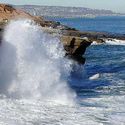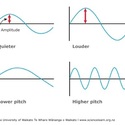In this set of activities, students are introduced to basic Physical World concepts about sound through the use of play and exploration.
This resource is designed for students working at New Zealand Curriculum levels 1 and 2. It also supports the Exploration – Mana Aotūroa strand in Te Whāriki1. Rather than set out prescribed instructions, it identifies key science concepts and ways in which students can explore, experience and build their understanding of sound. It also provides pedagogical information to guide educators as they shape questions and discussions during the exploratory activities.
The article Building Science Concepts: Exploring sound provides background information about basic science concepts needed to understand sound and how we make and hear them.
This activity provides opportunities for students to investigate:
- differences in sounds
- how sounds are made
- ideas about volume2 and pitch3.
You will need:
- instruments and objects for making a variety of sounds
- a way to record students’ ideas.
Download the Word file (see link below).
Related content and activities
Building Science Concepts: Exploring sound is a partial replication of the New Zealand Ministry of Education’s Building Science Concepts Book 18 Exploring Sound: Using Sound-makers and Musical Instruments. The article and interactive cover the science notes provided in the original BSC book.
Sound – lower primary is a collection of resources and notes for educators. You are welcome to copy the collection to your own profile, where you can edit and curate additional resources. The article Creating collections tells you how to get the most out of a collection.
Sounds of Aotearoa is a recorded PLD session that features educators from the New Zealand Association of Primary Science Educators (NZAPSE) exploring fun ways to learn and teach about sound.
Additional activities for investigating sound with younger students:
Useful link
Deakin University has a concise listing of science concepts and alternative conceptions as they relate to sound.
Acknowledgement
This resource uses information from the New Zealand Ministry of Education’s Building Science Concepts Book 18 Exploring Sound: Using Sound-makers and Musical Instruments.
- Te Whāriki: Te Whāriki sets out the curriculum to be used in Aotearoa New Zealand early childhood education (ECE) settings. The expectation is that, in their early years, children will experience a curriculum that empowers them as lifelong learners. Te Whāriki supports this work by providing a framework of principles and strands.
- volume: 1. The quantity of space occupied by a liquid, solid or gas. Common units used to display volume include cubic metres, litres, millilitres, tablespoons and teaspoons. (Volume can refer to a large quanity of something). 2. The degree of sound intensity or audibility; loudness.
- pitch: 1. (Flight) The movement of the nose (front) of an airplane or spacecraft up or down about a transverse axis. 2. (Sound) A human perception of how high or low the frequency of the sound being heard appears to be.



